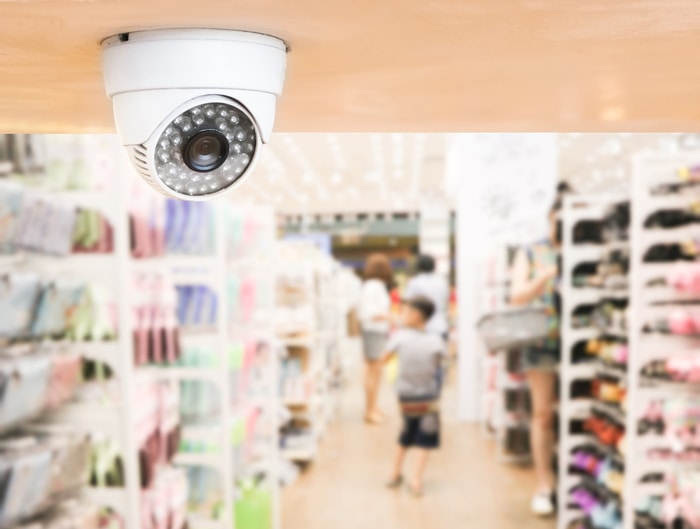When you own a small business, you need to protect your profit margins. To do this, you may look for the lowest price on your supplies or raw materials, and see which tasks you can outsource for less than it costs you do it yourself. However, you shouldn’t stop at these business basics. You also need to protect your assets.

At a minimum, you will need to cover backrooms, inventory spaces, low-visibility areas in retail stores, cash registers and locked safes, as well as entryways and windows. To do this effectively, you will need to use different camera types and technologies. The model you choose will impact whether you get mobile notifications, have the ability to store recorded video in the cloud, take advantage of motion detection or use night vision. When you fully understand your options, it will be easier for you to choose a security camera system for your small business.
Types of Business Security Cameras
First, understand what you need out of a security camera system. You can still find analog systems, but they lack many of the features that internet protocol (IP) systems have. IP cameras have significantly higher resolutions, and they tend to offer notifications, motion detection and more. They can also be uploaded to a cloud for secure storage.
The difference is pretty straightforward, but there are many different types of security camera solutions. You can get wired systems that offer 4K resolution and full-color night vision that is perfect when you need an accurate image, even in the dark. If you need to watch a fairly large area, you can choose a PTZ camera that has the ability to pan, tilt and zoom. These let you monitor a space using a preset pattern or you can create your own tour. PTZ cameras also let you zoom in, but they are not your only option. If you need to zoom in and get the most detail, but you don’t need to monitor a large space, a varifocal zoom lens could be a good fit. This camera lets you zoom in extremely close and capture every detail. For instance, you might want to use this lens to focus on the cash register.
Security Camera Placement
Security camera placement also matters. Your cameras are only as good as the coverage they provide. Understanding where you should place your security cameras will help you make sure you have the right cameras covering the right places and that you will get enough cameras to do the job.
You will want at least one camera on your main entrance. In addition to burglars who may try to break in the front door, you can also catch people who might try to steal packages that you receive before opening hours or on off days. You may want to cover your other entrances, too. Back doors and side doors are often hidden from street view, so they are vulnerable. Many businesses add monitoring to other parts of the exterior as well. This lets them see any people who may be lurking around the property. However, this is just the outside. Inside, you will want to cover windows, stairways, and hallways as well as low-visibility, high-value and high-risk areas. This could include inventory, cash registers or places within the store where clerks may not have a good sight of customers.
Choosing a Business Security Camera Solution
Picking a security camera solution for your small business starts with determining your needs then choosing camera systems that meet those requirements. Spend time looking at your property and identify which areas are most vulnerable to burglars and which low-visibility areas are most vulnerable to thieves.
